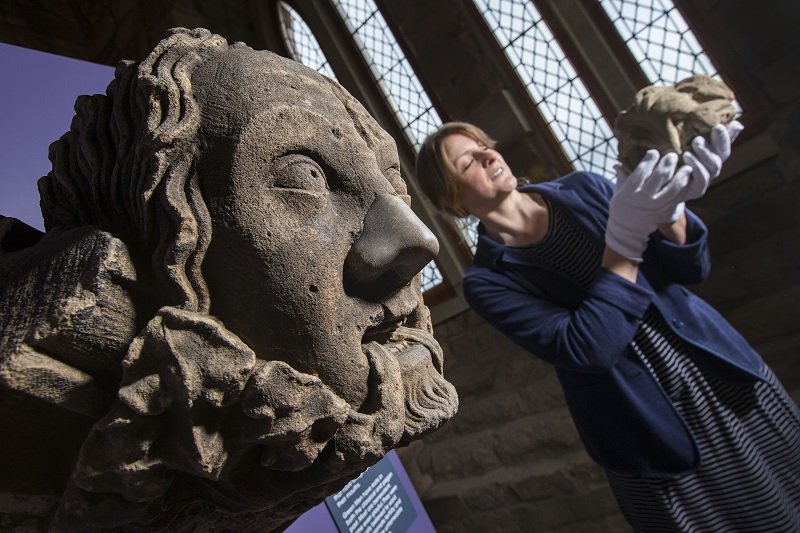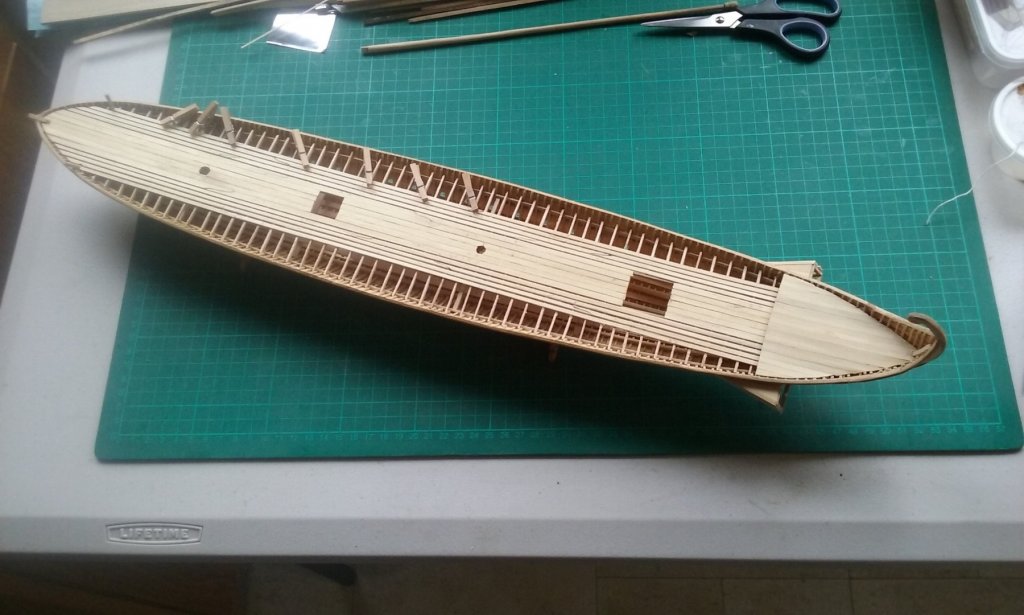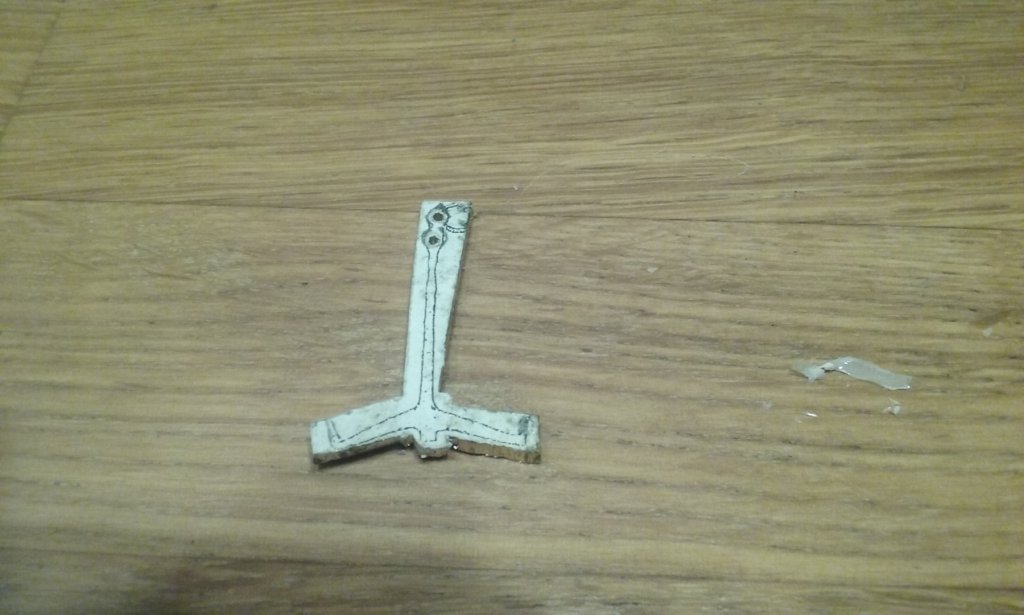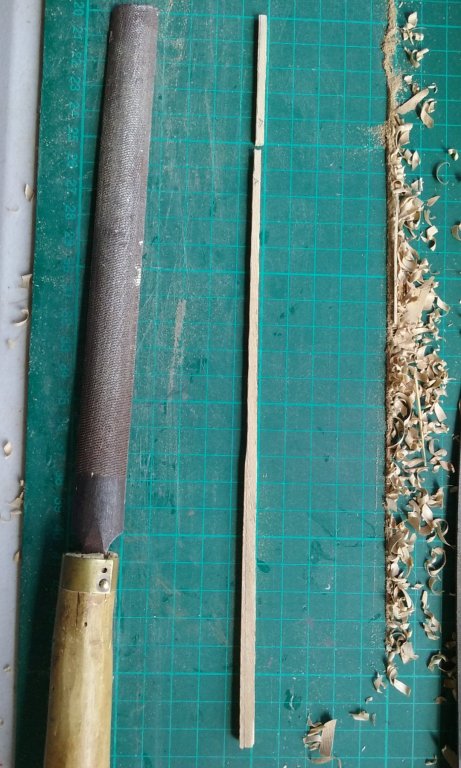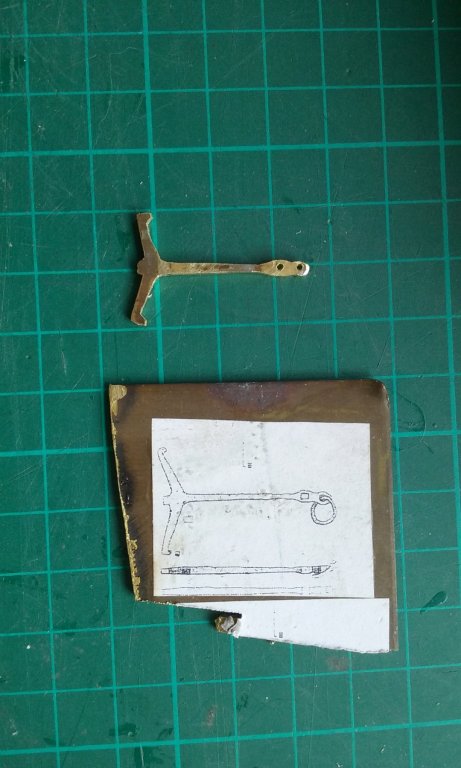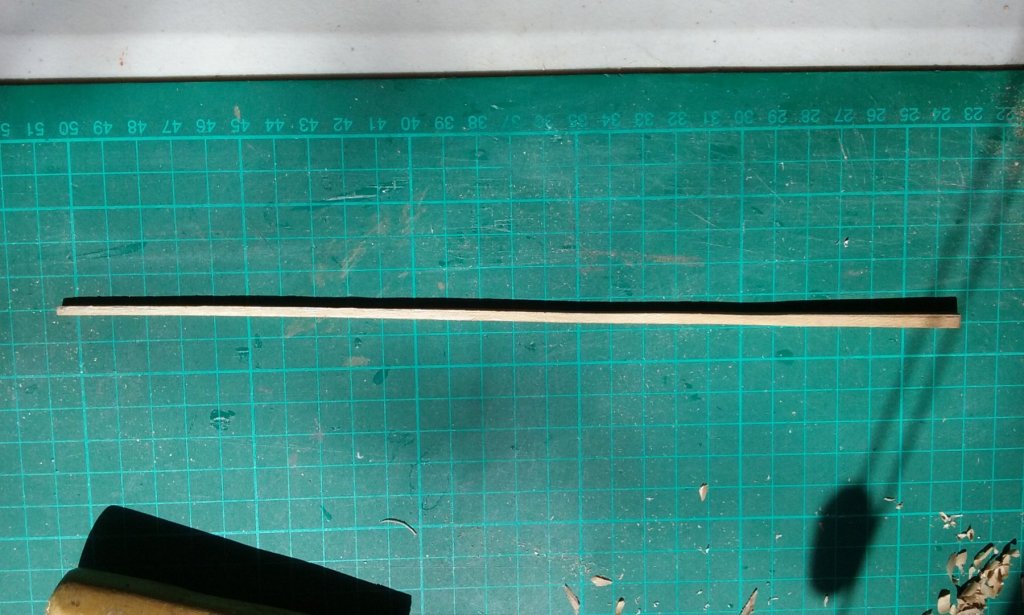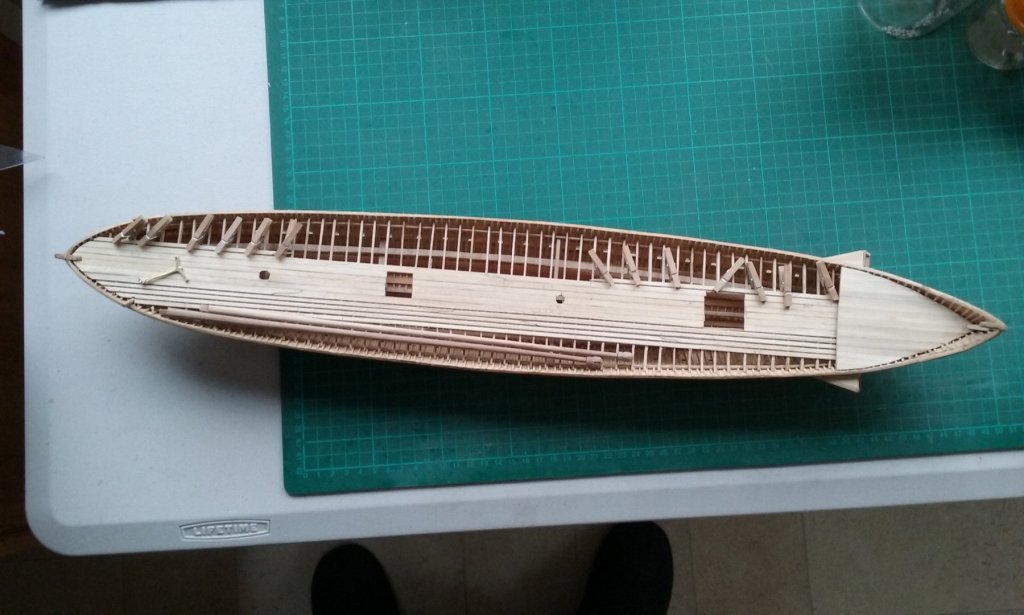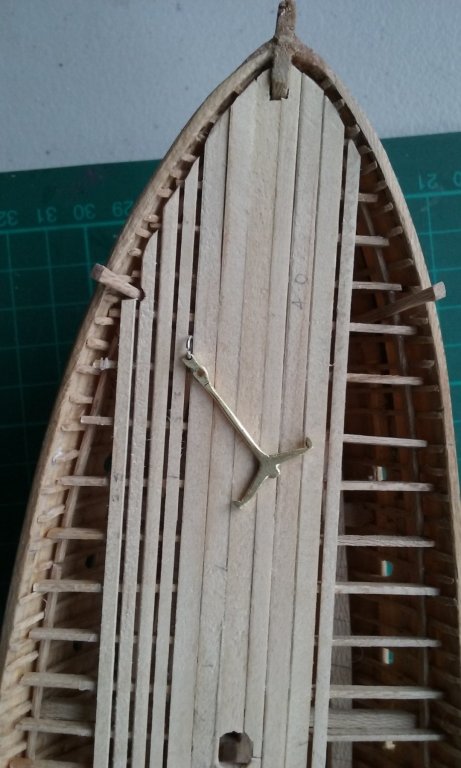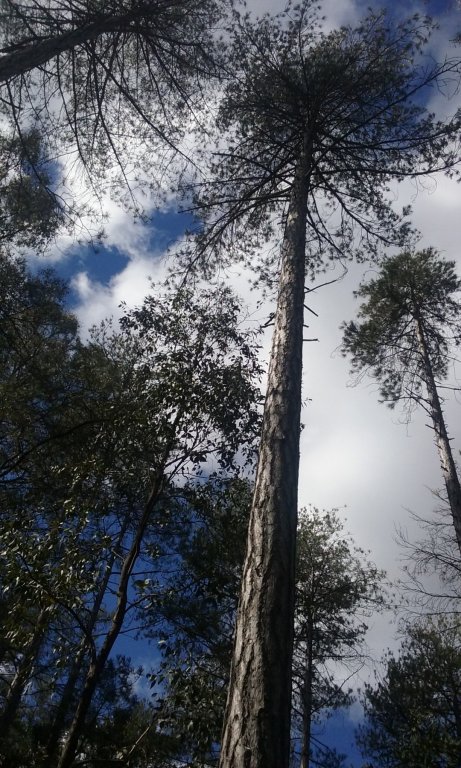-
Posts
7,989 -
Joined
-
Last visited
Content Type
Profiles
Forums
Gallery
Events
Everything posted by Louie da fly
-
Well, those are what heraldry would call a leopard "proper" (in its own natural colours), and a blazon (heraldic description) would certainly take the trouble to point out that it was a real leopard rather than a "leopard". Carving hair to look natural is an absolute bugger. Generally most carvings of people tend to oversimplify its features and curls etc, even when, as shown below, the thing is enormous (designed to be seen from quite a distance). I've done a little at 1:50, but when the scale gets down to 1:80 as you're doing, it becomes almost impossible. Generally, at that size the finer detail becomes pretty hard to see with the naked eye anyway. Looking good. Steven
-
Yes, at least one - see Steven
- 16 replies
-
They're obviously snow leopards, just emerging from winter . . . Steven PS: In heraldry a "leopard" has no spots - in fact the name leopard denotes a lion(!) passant gardant (walking past in profile, but looking at the viewer. https://en.wikipedia.org/wiki/Leopard_(heraldry)
-
Hi, Rod. I'd echo Vossy's remarks. The longboat is a nice and relatively easy intro to wooden modelling, but it's a huge leap from there to the Endeavour herself. It might be good after finishing the longboat to take on something intermediate in difficulty, perhaps a naval cutter (such as the Cheerful), before moving up to the Endeavour. In the meantime best of luck and success with the longboat kit. There are certainly build logs for it on the forum to refer to, and the people here are very willing to help with advice and guidance. Steven
-
Beautiful work, Dan. A project and a finished result to be proud of. Steven
- 287 replies
-
- michelangelo
- ocean liner
-
(and 1 more)
Tagged with:
-
Deck planking finished to the point where I have to stop for the time being. I need to leave a certain amount open to see through so I know where to fix the lower bank of oars. And second anchor roughly cut to shape. Steven
-
Greg, have you been to Point Cook airbase to see the restored Walrus they have there? Not really anything to do with this build (which is amazing - when I grow up I want to be this good), but worth a look. Steven
- 405 replies
-
- tamiya
- king george v
-
(and 2 more)
Tagged with:
-
It looked totally ok! No obvious problems with the grain, no obvious knots, then SNAP! Well I've replaced the spar and well into number three of four. Wish me luck! Steven
-
Thanks for the good wishes, Pat, but it's just too far for me to drill, especially as I don't have a drill press. I expect I'll find another use for the piece of wood, and in the meantime I'm making up a replacement. Steven
-
Just working on the second spar of the lateen yard and - AAAARGHHH!!. There must have been a flaw in the wood. I was filing it all smooth after having trimmed it almost to shape with a Stanley knife, and the end broke clean off. Nothing I can do. If I glue it back together it will just break again, probably at the most inconvenient possible time. I thought maybe a pin joining the two ends, but I really don't have the equipment (or the skill) to drill to that level of precision. And after all that work, too. Still, I'd rather have it happen now than later. And I have plenty more wood, so off we go again with a new piece, starting all over again. By the way, I should have been a little more informative regarding the Serce Limani anchor. It would originally have had a stock, but being made of wood it would have disintegrated in the 1000 years underwater since she sank. Steven
-
Thanks Patrick. I thought he would be about that size. Steven
- 756 replies
-
- galleon
- golden hind
-
(and 2 more)
Tagged with:
-
Beautiful work, as usual, Patrick. Just out of interest, how tall is that "crew member" in your last photo? Steven
- 756 replies
-
- galleon
- golden hind
-
(and 2 more)
Tagged with:
-
Mark, Yes, if by a lateral bar you mean the anchor stock. In fact, the original picture I was working from has since been superseded by more accurate drawings of all the Serce Limani anchors in the book Serçe Limani: An Eleventh-Century Shipwreck Vol. 1, The Ship and Its Anchorage, Crew, and Passengers by G. F. Bass, S. D. Matthews, J. R. Steffy, and F. H. Van Doorninck. A preview can be seen at https://books.google.com.au/books?id=E6ZJ-05aC-sC&pg=PA237&lpg=PA237&dq=serce+limani+wreck+anchor&source=bl&ots=2c7A-6VvFY&sig=RSqn4jY5rzHnXn7M80QDf6Wdq9Y&hl=en&sa=X&ved=2ahUKEwj40c_1v8PdAhUD57wKHV-oCHUQ6AEwC3oECAAQAQ#v=onepage&q=serce limani wreck anchor&f=false, (you'll have to do a bit of scrolling to get to the right bit) I've had to somewhat revise the form the anchor has taken, but only in fairly minor details - the hole for the stock turns out to be circular and the housing for it is diamond-shaped, and the shank is also circular in section. I wasn't all that happy with the first anchor anyway, but I've made it as close as I could to the later version. I'll probably still use it - otherwise it's a lot of work wasted. It's not surprising that the drawings have been revised - there was a lot of rust and concretions which would disguise the true form of the anchor on first investigation. After all, it's been at the bottom of the sea for almost 1000 years (the ship probably sank in about 1025 AD, judging by the coins she had on board). Steven
-
More planking. I've decided that 4 isolated planks each side is enough for my purposes - more than that looks wrong. So I've started on the other side. Here's the first anchor under construction. It's almost complete - compare it with the pictures on the previous page. I will blacken it and add a stock in due course. The dromons of the Crete expedition were to be provided with 6 anchors each. Anchors of the time were relatively light - the Serce Limani wreck had 9 wrought iron anchors ranging in weight from 50 to 65 kilograms (100 to 130 lb), all to the same basic design, arranged in two stacks on the foredeck. It appears that the snapping of the stern anchor (the snapped anchor has been recovered) as the ship sought refuge in the bay from a storm was the cause of the ship's loss - they didn't have time to drop another anchor. And the anchor on the foredeck to give an idea of scale. And here's one of the spars of the lateen yard in progress. Steven
-
That's a very good point, Mark. So maybe I did the right thing after all, albeit unknowingly. Certainly, there is a lot of bracing in the hull in the shape of stringers and wales,and in fact Prof Pryor did make the point that the decking would have provided much needed stiffness to a hull that was very long and thin - I'd just forgotten that he'd done so (a senior moment,perhaps?). Steven
-

Girona by augustus
Louie da fly replied to augustus's topic in - Build logs for subjects built 1501 - 1750
Wow! Amazing work! I'd never heard of the Girona, so I looked her up. Fascinating history. Apart from the treasure, was much of the wreck itself recovered? Steven -
Thanks for all the likes. It's good to feel others are following along with the build and enjoying it, and perhaps even think I'm on the right track, (something I sometimes have doubts about). Though the argument for dromons being fully decked is as usual based on far too little information and indirect references in contemporary records, from the evidence he provides I am satisfied that Prof Pryor is correct in stating that they were fully decked. The most telling in my view is the testimony of John Kaminiates who had been forced to row in a dromon captured by Arabs in 904: “ ... the barbarians with us put themselves on the upper benches and left the lower [benches] to us, which were full of deep gloom and evil smells, and could only be described as a floating grave”. However, I don't believe this invalidates my idea of planking with small gaps between - below decks would still have received little light under these circumstances. I'd been hoping that his using the word "gloom" instead of "dark" would have reinforced this idea, but unfortunately that's how it was translated, not how it reads in the original Greek, which has "much darkness" (or perhaps "great darkness"). By the way, I was recently lucky enough to be shown a number of pinus nigra (black pine) trees growing in a forest planted over 100 years ago in Creswick, about 20 minutes drive from home. This is the timber the planks of my dromon should have been made of if I'd had access to it, instead of the ubiquitous pinus radiata from the local hardware shop I was obliged to use. I took home a (small) fallen branch and was pleasantly surprised to find the two timbers look very similar. Steven
-
It is said that Queen Elizabeth the First had a bath once a month, whether she needed one or not. 😝 Steven
-
Thanks, Pat. On reflection and referring back to Age of the Dromon, I'm actually wondering if I shouldn't have made the whole deck this way. Prof Pryor states that a dromon should have at least 8 square metres for air entry and somewhat more for it to exit. I'm struggling to get 8 overall, even taking the hatch and the companionway into account. However, as I've already committed myself and I'm not prepared to rip up the planks I've already laid, I'll leave it as it is. I might increase the number of isolated deck planks to four or even five, but I'll have to see how that looks. Another consideration is that I want solid planking beneath the upper oarsmen - I certainly wouldn't want to be sitting below a bunch of guys dripping with sweat . . . Steven
-
The only thing I can think of is to do an image search on tree class trawlers and see if there's enough information in those photos to get an idea of what Juniper would have looked like. Perhaps they were all built to the same design? If so, there should have been only minor differences between them. Best I can do. Steven
About us
Modelshipworld - Advancing Ship Modeling through Research
SSL Secured
Your security is important for us so this Website is SSL-Secured
NRG Mailing Address
Nautical Research Guild
237 South Lincoln Street
Westmont IL, 60559-1917
Model Ship World ® and the MSW logo are Registered Trademarks, and belong to the Nautical Research Guild (United States Patent and Trademark Office: No. 6,929,264 & No. 6,929,274, registered Dec. 20, 2022)
Helpful Links
About the NRG
If you enjoy building ship models that are historically accurate as well as beautiful, then The Nautical Research Guild (NRG) is just right for you.
The Guild is a non-profit educational organization whose mission is to “Advance Ship Modeling Through Research”. We provide support to our members in their efforts to raise the quality of their model ships.
The Nautical Research Guild has published our world-renowned quarterly magazine, The Nautical Research Journal, since 1955. The pages of the Journal are full of articles by accomplished ship modelers who show you how they create those exquisite details on their models, and by maritime historians who show you the correct details to build. The Journal is available in both print and digital editions. Go to the NRG web site (www.thenrg.org) to download a complimentary digital copy of the Journal. The NRG also publishes plan sets, books and compilations of back issues of the Journal and the former Ships in Scale and Model Ship Builder magazines.


